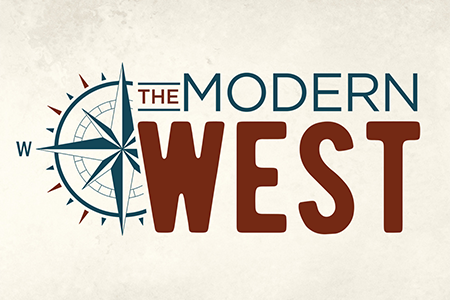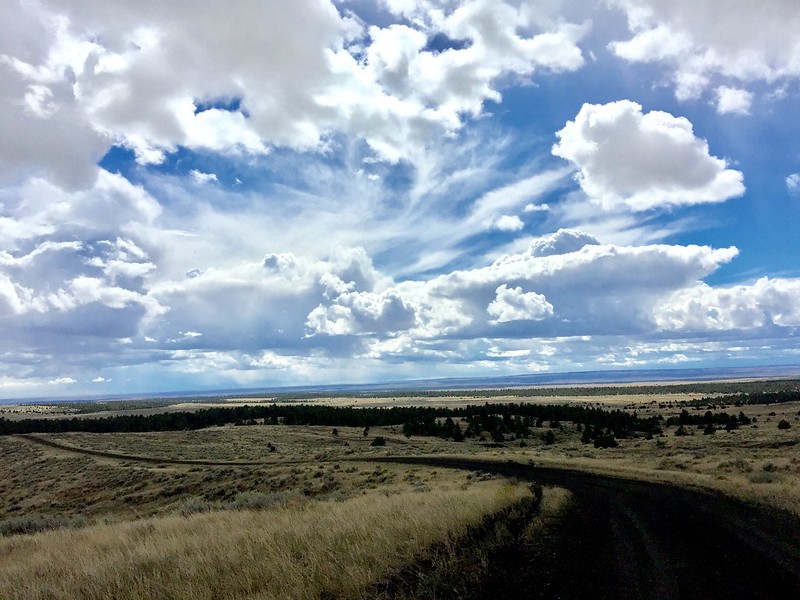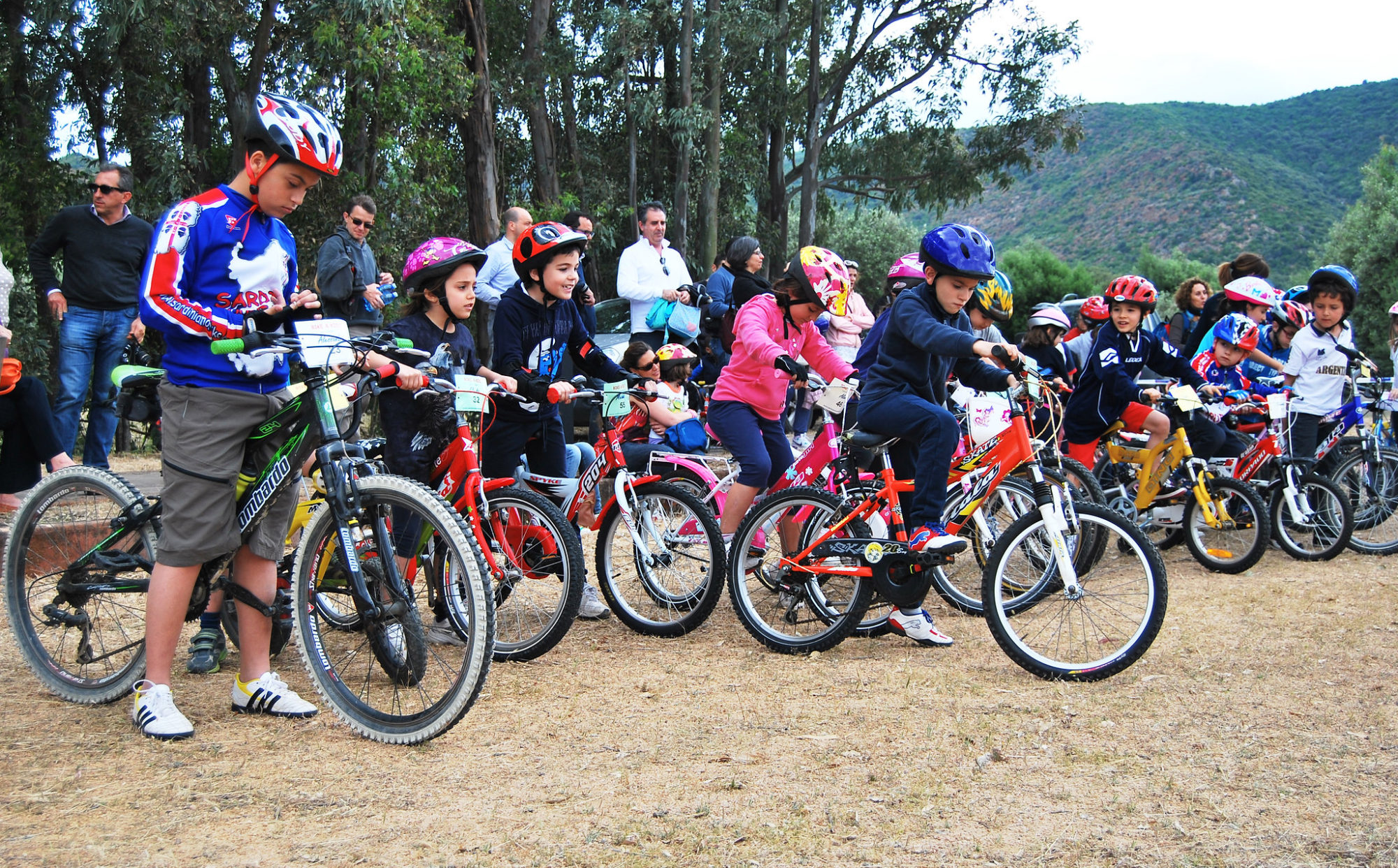
A hike and picnic on nearby public lands might seem like a low-key family outing. But break down the activity, and it’s clear that a lot of resources are required for a successful trip.
Consider the know-how involved: Where to go, and how to get there. What food to pack, and how to cook it. Dressing for the weather, and making sure the hike’s not too long. And then there is the money. Hiking shoes, backpacks, insulated layers, and waterproof jackets can cost hundreds of dollars. Plus, you need a personal vehicle — preferably one that won’t bottom out on the drive to the trailhead.
Factor in the embedded costs, and the act of walking and eating outdoors can be too much for some families to handle. But that’s not necessarily the case in Las Cruces, New Mexico. There, Mateo Ortega and his teammates at the social services organization Families and Youth, Inc., can help.
“We can actually guide [families] through the process,” Ortega, who oversees Families and Youth’s Outdoor Legacy Project, told me recently. The organization can help families choose where to go, loan them a cooler to store lunch, and give them a voucher to pay for the food. “They can check out equipment from us. They can even get a gas card from us, if gas is a barrier.”
For many families, those financial and logistical barriers prevent easy access to the outdoors. But two states recently launched grant funds designed to make outdoor recreation more equitable. New Mexico this year doled out nearly $262,000 to organizations that help kids in low-income communities of color get outside; Families and Youth received a $15,000 grant for its Outdoor Legacy Project. And in California, legislators have earmarked $19 million for an outdoor equity grant fund.
These funds send an important message: experiencing the outdoors is a right, not a privilege. Therefore, states should facilitate the ability of their residents — especially kids — to hunt, hike, climb, fish, and ski.
“It is important to focus on New Mexicans first and foremost,” said Axie Navas, director of New Mexico’s Outdoor Recreation Division, which oversees the grant fund. “We need to think about raising the next generation of land and water stewards so we don’t end up … with an over-emphasis on visitors and tourism and less on the people who live there.”
This story first appeared in the Bitterroot Newsletter. Sign up below to receive Jake’s latest reporting right in your inbox.
California has been at the forefront of equity in the outdoors. In 2018, voters passed Proposition 68, a sweeping public-lands bill that dedicated $1.3 billion to creating and maintaining parks in underserved communities. A year later, lawmakers in Sacramento passed Assembly Bill 209, which established the Outdoor Equity Grants Program. Overseen by the state Department of Parks and Recreation, the program will dedicate millions of dollars each year to outdoor environmental education programs that primarily serve low-income students.
Together, the measures serve as a public-lands double whammy. Prop 68 funds will bring nature closer to low-income communities with the creation of new parks, or by sprucing up neglected ones. Meanwhile, the equity fund prioritizes transportation to state parks, national forests, and other public lands in California, and it will fund programming to engage kids once they arrive.
“California is home to over 280 state parks and millions of acres of public lands that exhibit the natural beauty and history of our state. However, access to outdoor experiences is often out of reach for communities and students of low-income communities. AB 209 brings equity to the accessibility of our parks to these students,” state Assemblymember Monique Limón, the bill’s sponsor, said in a press release last year. (Limón won a seat in the state senate this month.)
The idea of outdoor equity grants was born in Ortega’s stomping ground of Las Cruces. As the notion of a dedicated outdoor recreation office was taking shape at the New Mexico statehouse in 2019, state Representative Angelica Rubio and Las Cruces City Councilor Gabriel Vasquez, among others, argued that an equity fund be tied to any bill creating an office to promote New Mexico’s ski slopes, rivers, and public lands. When the bill passed in April 2019, it included a $100,000 annual allocation for the equity fund (corporate and private contributions have swelled the pot).
While California’s fund emphasizes education, New Mexico lawmakers wanted to promote fun. “The goal was to provide funds to established organizations who are already doing such great work to take young people — particularly kids with low resources, kids of color — outside not to learn a curriculum, but to get their hands dirty,” Rubio said on public radio station KRWG.
New Mexico and California aren’t the only states trying to get kids outside — Montana and Wyoming, for instance, have programs to introduce young folks to hunting — but their focus on equity is unique. And it’s an important issue to address. An analysis by the Hispanic Access Fund and the Center for American Progress found that 76 percent of low-income people of color live in “nature deprived” areas that are losing green space at an exceptionally fast rate.
This year, New Mexico handed out its first grants to 25 programs looking to end that nature deprivation. The funds will help Zuni Pueblo get kids onto the Zuni River in both summer and winter, while nonprofit Heart of the Gila will direct the money toward youth activities and conservation work on the Gila River. Numerous recipients will create or expand bicycling programs in communities around the state, while others will on get more kids with disabilities on the trail.
Ortega said the grant fund will help Families and Youth boost its existing outdoor initiatives. Some of the money will be used to expand its gear library with more tents, first-aid kits, coolers, and the like. It’s also planning additional programming. In the coming weeks, Families and Youth will roll out a program centered around cutting a Christmas tree in nearby Lincoln National Forest. Along the way, participants will learn about conservation in their local forest.
“Our goal is not just to get young people outdoors, but to equip them with the education and equipment to fully become immersed in that experience,” Ortega said. “The Outdoor Equity Fund has allowed us to do what we do in a more robust way.”
The grants are also seeding brand new organizations. Fly Fish NM director Andrew Ortiz said the state’s $15,000 grant is the first funding his group has received. With it, his fledgling organization plans to set up low-income kids with their own fly gear — waders, rod, reel, the works — and take them out to New Mexico’s waters for a day of fishing (once the pandemic recedes and they’re allowed to load folks into a van). The goal is to get kids hooked on a new activity they otherwise couldn’t afford — and get them to care about the state’s rivers in the process.
“It’s an investment in the youth,” Ortiz said of the state equity fund. “We want to turn these youth into good stewards of the outdoors, and they can keep the rivers clean, and preserve them for the next generation.”
From our sponsor

The rural West is seeing a steeper and steeper decline into despair, especially among White men. In part 5 of The Modern West’s Ghost Town(ing) series, we’ll follow the unusual response of one small town when a Vietnam veteran’s mental breakdown threatens the town’s safety.
Worth a Read
Top stories from around the West
Oregon Governor Kate Brown has handled the pandemic as well as anybody, and she’s fed up with Congress. She told NPR that Democrats should be open to a smaller aid package, and Senate Majority Leader Mitch McConnell “needs to get off his duff and deliver for the American people.”
•••
Pending federal approval, four dams on the Klamath River are coming down, The Oregonian reports. The deal to remove the dams required years of negotiations between tribes, Oregon, California, and PacifiCorp, the dams’ utility owner. “This dam removal is more than just a concrete project coming down. It’s a new day and a new era,” Yurok Tribe chairman Joseph James said.
•••
Joe Biden campaigned on mitigating climate change. The question now, the Los Angeles Times’ Sammy Roth writes, is whether his administration will try to remove natural gas from the energy mix.
•••
Juliana Sukut of the Billings Gazette details the life of a rural public-health worker during the pandemic. “The phone rings off the hook with people upset about testing availability, angry about delayed test results, or mad about health directives being too restrictive or not restrictive enough.”
•••
Could predators be the answer to chronic wasting disease? Researchers studying Yellowstone wolves think so, since they tend to kill the weakest animals in a herd, The New York Times reports.
•••
There’s an important detail in Utah’s COVID-19 vaccine plan that’s worth noting: Essential workers are second in line, behind only those who work in health care. It’ll be up to lawmakers to decide who is “essential,” but it seems morally clear that the ag workers, grocery store clerks, and bus drivers who have risked their health throughout the pandemic should get vaccines ahead of those who work from home.
Bitterroot relies on the support of readers like you
Your Land
An ode to the public lands we share

Share with a friend | Watch a cat video | View previous newsletters

